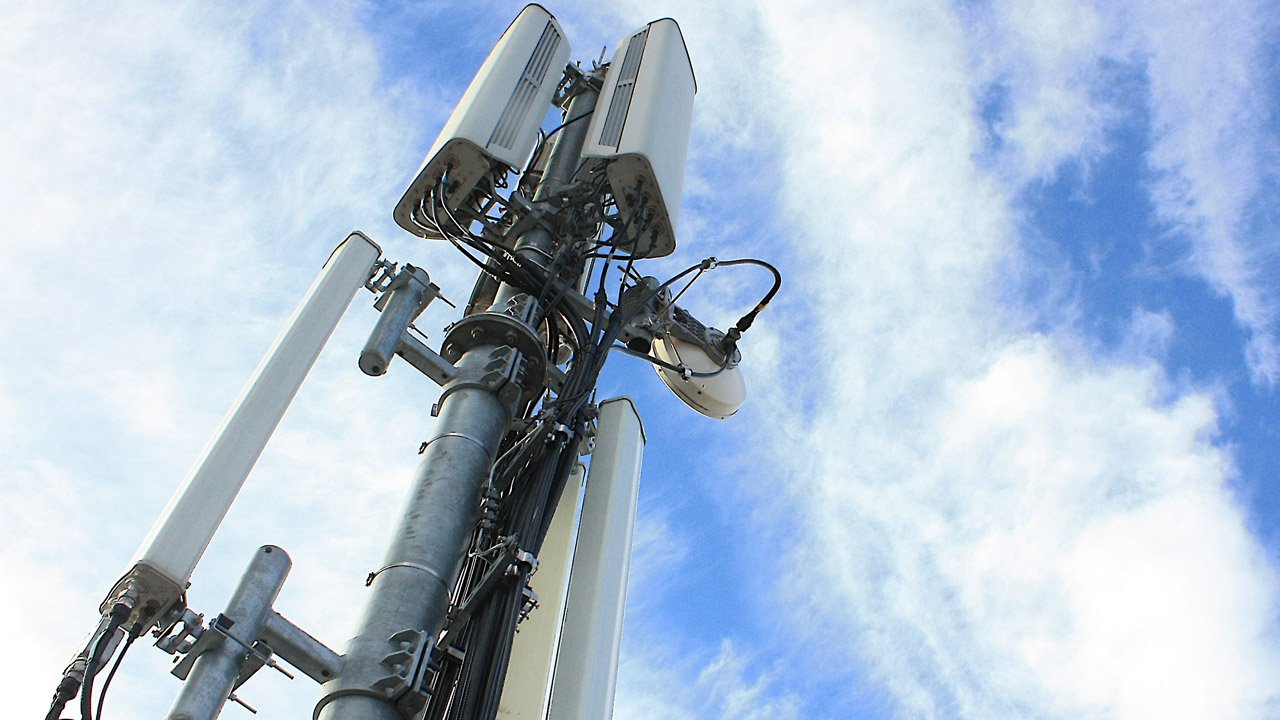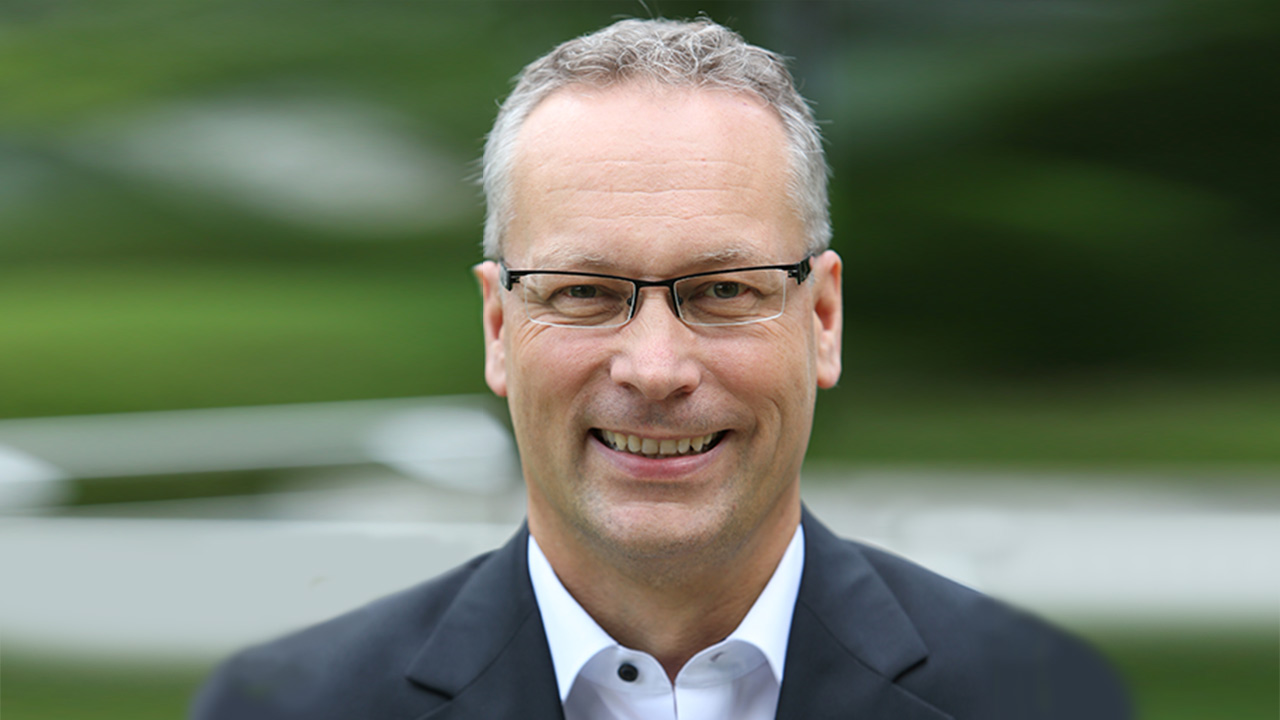25.04.2019
O2 network expansion in the first quarter of 2019:
Telefónica Deutschland commissions a new LTE transmitter every hour

Telefónica Deutschland, Photo: Jörg Borm
Telefónica Deutschland once again stepped up the pace of its LTE expansion across its O2 network in the first quarter of 2019. The new LTE stations that the company built together with the LTE upgrades to existing locations that it performed numbered over 2,200 in the first three months overall. That means that on average, the company commissioned a new LTE transmitter every hour over the course of the first quarter – 24 hours a day, seven days a week. The benefits for customers on the O2 network include constant improvements in LTE capacity, faster speeds, an ever better network performance for using their digital applications and overall more mobile freedom.
Having already significantly accelerated its LTE expansion measures in February, Telefónica Deutschland carried out more than 800 LTE upgrades in March as well. As a result, the LTE expansion at Telefónica Deutschland remains at a consistently high level. The company will be using optimised processes and targeted action to pick up the pace of the expansion yet further in the coming months, see interview with Marcus Thurand at the end of the text.
LTE expansion making great progress in all German states

Photo: gettyimages
Telefónica Deutschland is making significant progress with its LTE expansion in all German states. In the first quarter of 2019, the company deployed the fast LTE standard for the first time in numerous locations across the country and improved coverage in many districts and municipalities. These included Mustin in Schleswig-Holstein (Herzogtum Lauenburg district) and Biebergemünd in Hesse as well as Hamich, a village in the Eifel mountains (Düren district). At the same time, the company also supplied LTE service to various regions popular with tourists, such as the municipality of Eschenlohe in the Loisach Valley, nestled below the Zugspitze, Simmersfeld in the northern Black Forest and Friedrichskoog on the North Sea coast. Please find the full list of districts for March 2019 at the end of the press release.
Meanwhile, the company has boosted its network capacity in densely populated regions and along major transport routes. This includes extensive LTE upgrades and new LTE stations in large cities such as Berlin, Bochum, Bonn, Düsseldorf, Dresden, Dortmund, Frankfurt, Essen, Hamburg, Hanover, Karlsruhe, Leipzig, Ludwigshafen, Mannheim, Munich, Nuremberg and Stuttgart as well as eliminating gaps in LTE coverage e.g. in areas along the A7 motorway such as Bönningstedt (Schleswig-Holstein) and Kalefeld (Lower Saxony).
Over the next few weeks, Telefónica Deutschland will be continuing to push for full LTE coverage to improve network quality for its customers and to move closer to fulfilling its objective of becoming "Mobile Customer & Digital Champion".
Telefónica Deutschland accelerates LTE expansion

Marcus Thurand
Three questions for Marcus Thurand, Vice President of Implementation & Engineering at Telefónica Deutschland
Marcus Thurand's department is among others responsible for the LTE expansion across Germany. In a brief interview, he told us how the company is planning the LTE expansion and how it managed to speed up the project in recent months.
Telefónica Deutschland is aiming to expand its network further this year with around 10,000 LTE upgrades. How do you plan a project of such a large scale?
We have clear objectives for our network expansion. We want to continue to improve LTE coverage so that our customers can use the O2 network to get online no matter where they are. We are also offering customers who have our large data packages the opportunity to use even more mobile data. To do that, we need to upgrade the LTE network with additional LTE frequencies in various regions so as to provide higher capacity and speeds. We carefully examine what is needed at each location in each region before formulating specific requirements and starting detailed planning. Although we would like to expand everywhere at the same time if we could, implementation naturally has to take place gradually. However, I think it is plain to see that we are really putting our foot down on the accelerator at the moment.
What does setting up an LTE station involve? What sort of challenges does it present?
We start by drawing up an initial design for the mobile communications site. This is a bit like an architect's drawing, visually plotting out all the technical components. At the same time, we negotiate with the landlord and the local authorities and obtain the necessary permits from the Federal Network Agency. If any significant changes arise, we also need to review the structural analysis and seek a permit from the relevant construction authority. Only then can we begin the implementation phase.
To enable the site to transmit via LTE, we install new equipment and additional antennas there, fit new wiring for the technical systems and, if necessary, provide new air conditioning. One aspect that is often rather challenging is the coordination involved; for example, when we need to apply to use cranes and close roads to install new equipment on rooftops. Everything needs to be right at that moment – timing, permits, equipment, resources and even the weather. Before the LTE station finally goes on air, we set the parameters for it by entering the necessary data and run through a few test scenarios. We use specific optimisations to ensure that antennas are set to the best possible orientations and that the process of passing mobile signals and subscribers to other stations runs smoothly. In doing so, we benefit enormously from technical features such as our self-organising network, which works from just a few parameters to take on automatic neighbourhood planning to make sure that handovers between stations are flawless.
Telefónica Deutschland has once again accelerated its LTE expansion significantly relative to last year. How have you managed that?
We are focusing entirely on the LTE expansion, which is going very well for us now that the network integration is complete. We have gained a lot of momentum with optimizing our rollout processes dealing with radio. Having previously followed a principle of regular "patch days", when we would import all the necessary technical changes into the network, we now implement them as and when necessary. That means that new LTE stations go on air almost straight away. We have also improved the way we work with our service providers, enabling them to build more quickly and us to spend less time and effort on coordination. That is making our rollout faster, more flexible and more efficient.
Thank you very much for talking to us.
In March 2019, Telefónica Deutschland upgraded existing GSM/UMTS stations to use LTE in areas of Germany including the following districts:
Aachen, Aichach-Friedberg, Altmarkkreis Salzwedel, Alzey-Worms, Ansbach, Augsburg, Bad Dürkheim, Bayreuth, Berlin, Böblingen, Bochum, Bonn, Börde, Bottrop, Calw, Cham, Cloppenburg, Coburg, Düsseldorf, Darmstadt-Dieburg, Dingolfing-Landau, Donau-Ries, Donnersbergkreis, Dortmund, Dresden, Duisburg, Ebersberg, Eichstätt, Enzkreis, Erlangen-Höchstadt, Essen, Esslingen, Fürth, Forchheim, Frankfurt am Main, Günzburg, Garmisch-Partenkirchen, Gelsenkirchen, Germersheim, Gießen, Gifhorn, Göppingen, Hagen, Hamburg, Harburg, Heidelberg, Heidenheim, Heilbronn, Hildesheim, Hochtaunuskreis, Hof, Ingolstadt, Karlsruhe, Kassel, Kelheim, Kiel, Köln, Krefeld, Kreis Borken, Kreis Düren, Kreis Dithmarschen, Kreis Euskirchen, Kreis Gütersloh, Kreis Groß-Gerau, Kreis Heinsberg, Kreis Herford, Kreis Herzogtum Lauenburg, Kreis Lippe, Kreis Mettmann, Kreis Minden-Lübbecke, Kreis Pinneberg, Kreis Recklinghausen, Kreis Rendsburg-Eckernförde, Kreis Segeberg, Kreis Steinfurt, Kreis Unna, Kreis Viersen, Kronach, Kulmbach, Lübeck, Lüneburg, Landshut, Leipzig, Ludwigsburg, Ludwigshafen am Rhein, Ludwigslust-Parchim, Mülheim an der Ruhr, München, Main-Spessart, Main-Taunus-Kreis, Mannheim, Mansfeld-Südharz, Märkischer Kreis, Nürnberg, Nürnberger Land, Neumarkt in der Oberpfalz, Neustadt an der Aisch-Bad Windsheim, Neustadt an der Waldnaab, Nienburg/Weser, Northeim, Oberhausen, Offenbach, Offenbach am Main, Oldenburg, Osnabrück, Ostalbkreis, Osterholz, Passau, Pforzheim, Potsdam, Prignitz, Ravensburg, Regen, Region Hannover, Remscheid, Rems-Murr-Kreis, Reutlingen, Rhein-Erft-Kreis, Rhein-Kreis Neuss, Rhein-Neckar-Kreis, Rhein-Sieg-Kreis, Rotenburg (Wümme), Roth, Rottweil, Saalekreis, Schmalkalden-Meiningen, Schwäbisch Hall, Schwandorf, Schwarzwald-Baar-Kreis, Sigmaringen, Solingen, Stade, Straubing-Bogen, Stuttgart, Tübingen, Tuttlingen, Vechta, Weilheim-Schongau, Wetteraukreis, Wiesbaden, Wuppertal